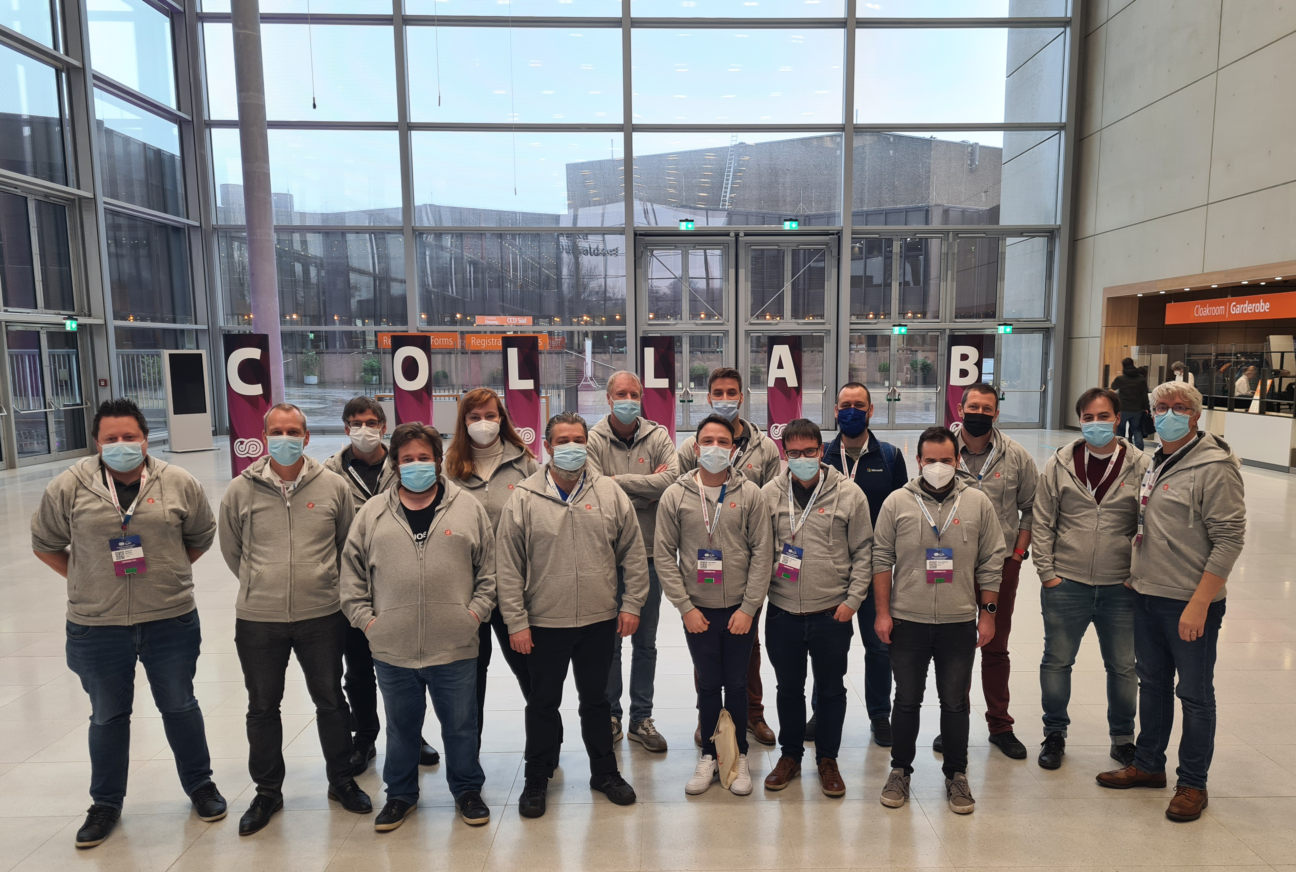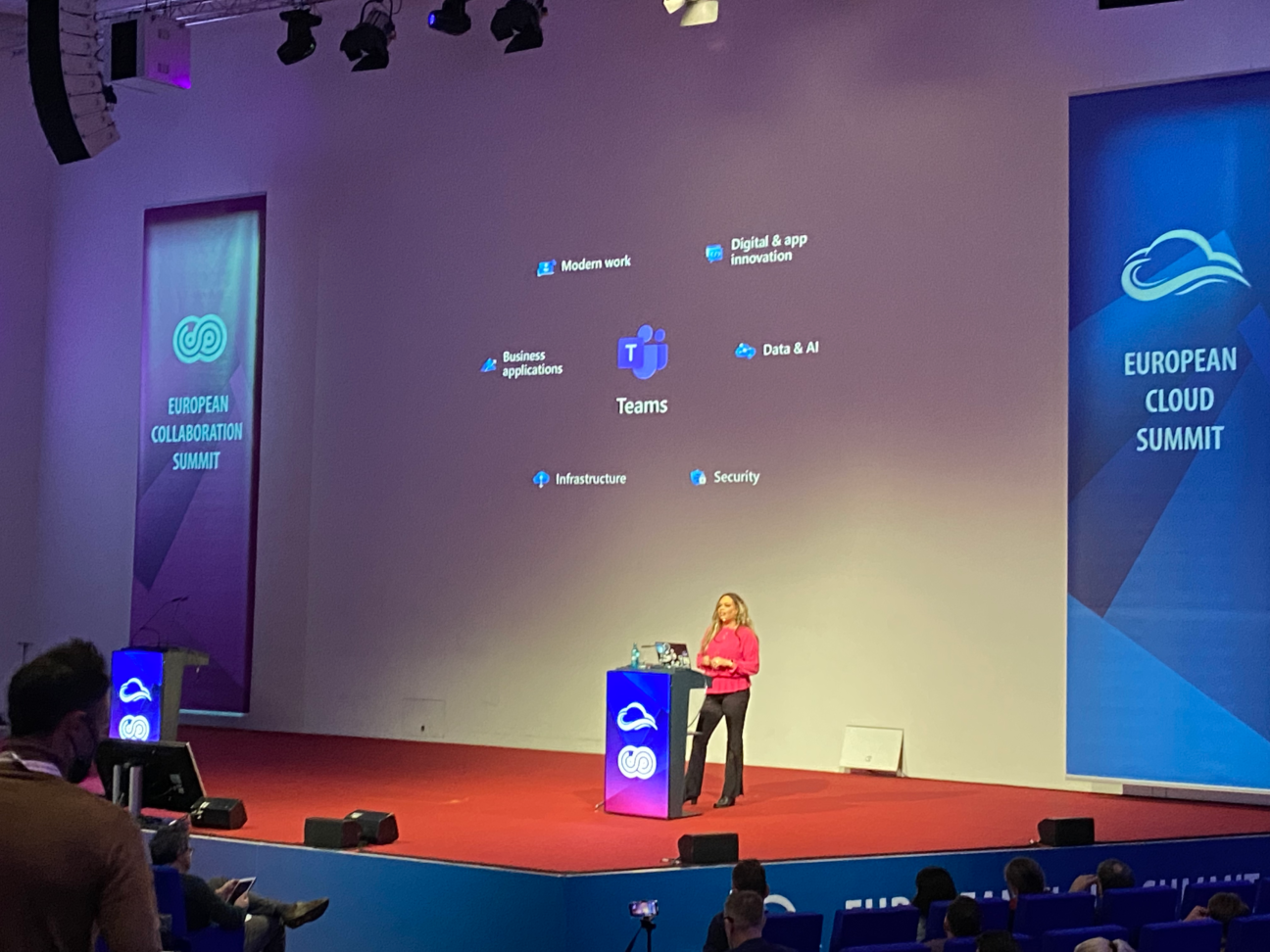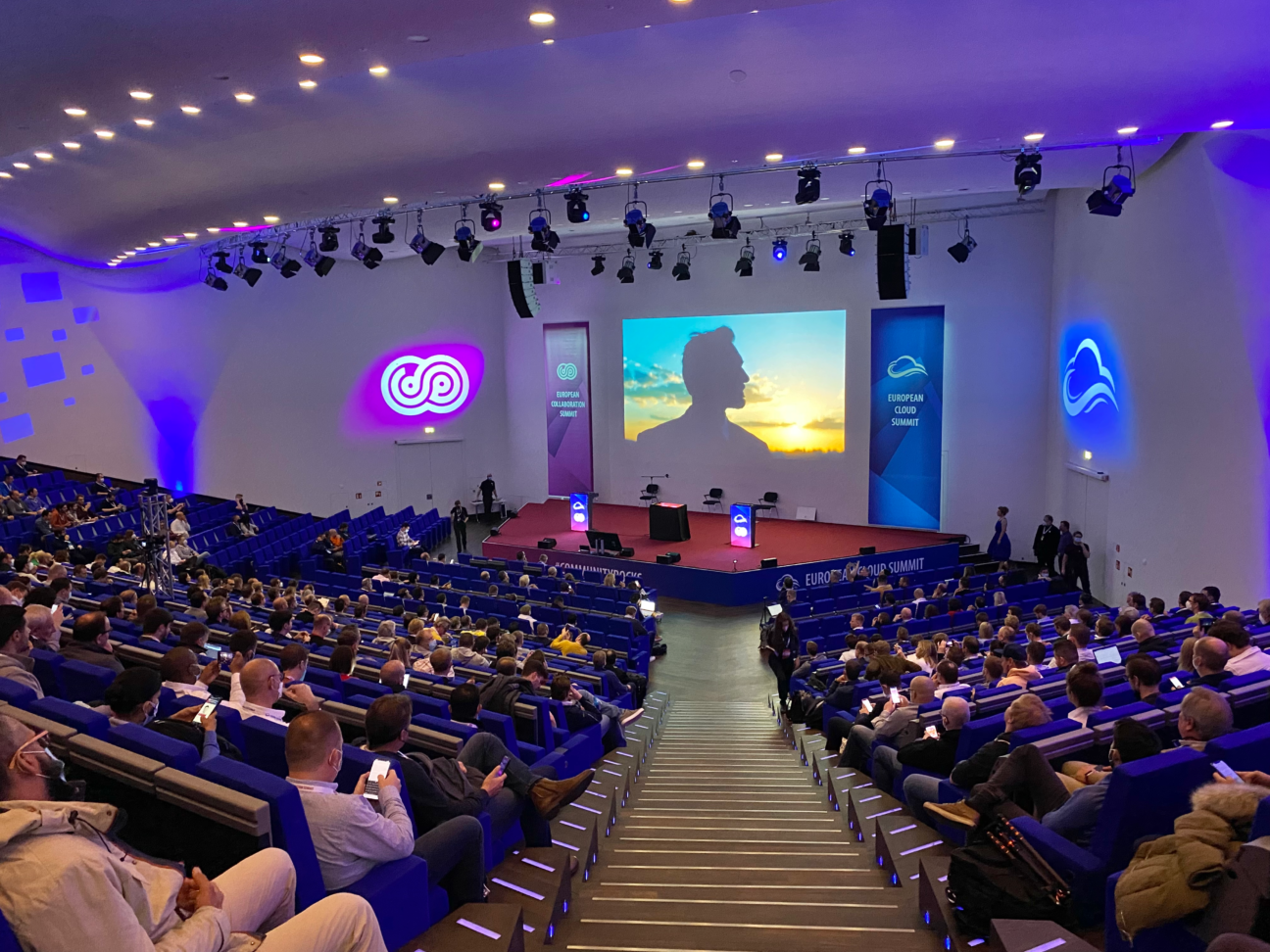Key highlights
From 29 November to 1 December, the European Collaboration Summit and the European Cloud Summit took place in Düsseldorf, Germany. Visitors were lucky this year because you could attend two conferences with one ticket. The European Collaboration Summit is interesting for people who are active in the M365 world. The European Cloud Summit focuses more on attendees with a focus on the Azure domain. With two major cloud technology related summits in one, visitors definitely had their heads in the clouds. A large delegation from our M Cloud team attended the Conference. Consultant Data Integrated Digital Workplace Jorne Lambrechts gives you some insights.

After almost two years of working remotely, a large part of the team was able to meet up again to attend the event. Since a few new people joined Devoteam during the pandemic, this event could also count as teambuilding.
Day 1
The first day was a pre-conference day. On this day there were several sessions, which took up the whole day, and visitors could choose a session to follow.
One of my team members attended and followed the session “Building Solutions For Microsoft Teams And SharePoint – PowerClass (PNP Tutorial)“. This session was a tutorial designed to give an overview of all elements used when designing a solution in O365.
The rest of the team arrived in Düsseldorf later that day and in the evening, we did a teambuilding activity.
Day 2
Keynote
The second day started early. The welcome session was followed by two keynotes. Now everyone on the team could decide for themselves which sessions they would like to attend. Because of my interest in the M365 environment, I attended the keynote “Navigating the hybrid workplace using Microsoft Teams” by Karuana Gatimu (Director, Customer Advocacy Group at Microsoft Teams Engineering). The keynote was about the need for evolution. The current covid situation and the changes in society – both cultural and business oriented – have changed everything. This means that we need a new frame of reference, based on three pillars:
- Strategy: the need to rethink the strategic approach
- Opportunities: everyone can embrace the changes to obtain a better way of working and gain a competitive advantage
- Feedback
After explaining the need for a new framework, the speaker showed a case study with the goal of “making teams work better”. Using the previously discussed framework, the speaker came up with a possible solution to make teams work better.

Sessions
After the keynotes, the break-out sessions started. I attended many interesting sessions related to M365 that day. I learned a lot about Microsoft Teams, how to architect cloud-based solutions for M365 and what to take into account when designing a solution. But I enjoyed one session in particular: “Running business logic code in the cloud” by Jussi Roine (CEO at North Advisors). The subject was interesting, but especially the way the session was delivered made this session a success for me. There was a good balance between interesting content with demos and funny anecdotes.
What I will definitely remember from this session is the following:
- When you start working on your solution, try to make it as future-proof as possible
- To run business logic in the cloud, there are numerous possibilities. Start with the simplest solution and only make it more complex when it is really necessary
- As an IT professional, and certainly as a developer, we like to use code in the implementation. In doing so, we need to consider whether this is necessary and whether it will cause anyone problems in the future
- The last thing I took away from the session is that it is also important to monitor the solution after the deployment, so that you can intervene in case of problems
Day 3
A morning of Power BI
The first session I wanted to attend on the last day of the conference was unfortunately cancelled. However, there was still the expo that I could visit. Here there were some networking opportunities and nice goodies to collect.
Hereafter, I attended the session “Your guide to understanding Power BI” by John White (CTO at UnlimitedViz) and Jason Himmelstein (Senior Manager at Ernst & Young). Actually, this should have been a rather boring session about the licensing model of Power BI but the speakers still managed to keep the attendees interested, even if it meant that they would have their lunch 15 minutes later. So how did they do that? Let me talk about the session.
The session started with the question “what is Power BI?” and went on about what a Power BI report is and what is behind Power BI. In the part about Power BI licensing, the speakers managed to explain the boring and complicated licensing model in a clear way, with a dose of humor.
After the licensing part was explained, the session continued about the components in Power BI (workspaces, data sets,…) and about different report types and when to use them. For example: an interactive report is used for unknown questions and is designed for users (interactive focus). A paginated report on the other hand is used for known questions and is designed for automation (printability is the focus here). The contagious enthusiasm of the speakers was transferred to the audience as there was no time left for demos. The audience stayed longer to see a demo after all.
An afternoon with Azure and SharePoint
In the afternoon, I attended a session of the Cloud Summit: “Keys and secrets in an enterprise environment” by Rick Van Rousselt (CTO at Advantive). It was about the many ways in Azure to make our life easier and more secure. The speaker dove deeper in the opportunities that managed identities provide. He talked about the possibilities of using other technologies like Azure KeyVault in combination to secure our enterprise environment.
The rest of the afternoon I walked around the expo and attended the session “Build Cleaner Client-side Code with React Functional Components and Hooks” by Bill Ayers (Technical Director at Flow Simulation Ltd). The session started with a brief introduction to the SharePoint Framework (SPFx), which is a framework you can use to build applications that extend the modern experience in SharePoint.
The next part was about ReactJS, which you can use with SPFx, and why use functional components (part of ReactJS). I can summarize this easily in one line: clean and simple. The rest of the session was a basic demo on the subject.

To conclude
Looking back, it was a very interesting conference. I think that, as the second youngest member of the team, I can say that such events are an added value for young professionals. Curiosity is stimulated in a healthy way and continuing to learn is an important quality in our field. Being able to meet up with a large part of the team was also great in times of a pandemic. Hopefully we can return next time without too strict covid measures.